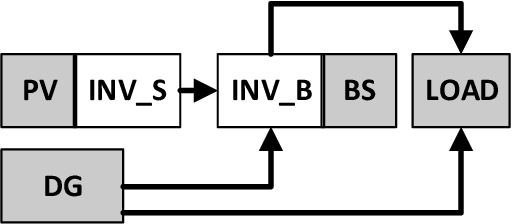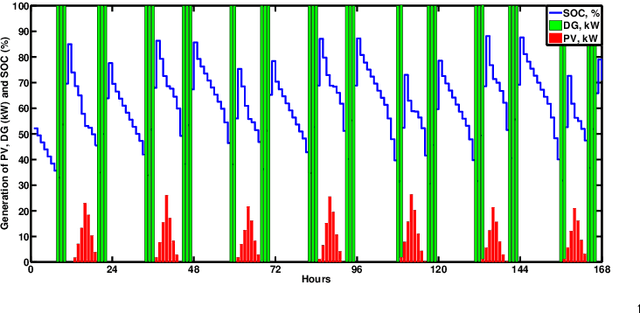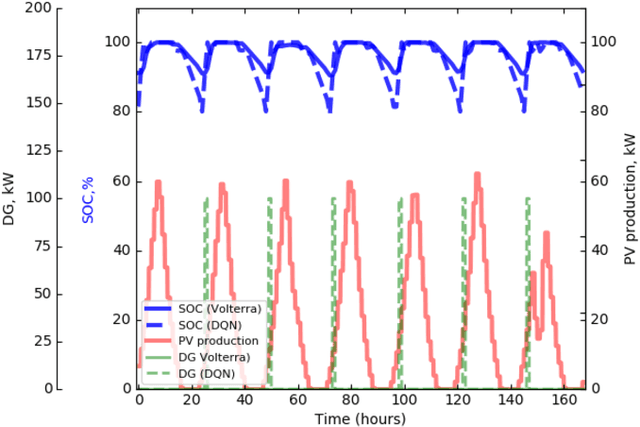Aliona Dreglea
Solving Nonlinear Energy Supply and Demand System Using Physics-Informed Neural Networks
Dec 22, 2024Abstract:Nonlinear differential equations and systems play a crucial role in modeling systems where time-dependent factors exhibit nonlinear characteristics. Due to their nonlinear nature, solving such systems often presents significant difficulties and challenges. In this study, we propose a method utilizing Physics-Informed Neural Networks (PINNs) to solve the nonlinear energy supply-demand (ESD) system. We design a neural network with four outputs, where each output approximates a function that corresponds to one of the unknown functions in the nonlinear system of differential equations describing the four-dimensional ESD problem. The neural network model is then trained and the parameters are identified, optimized to achieve a more accurate solution. The solutions obtained from the neural network for this problem are equivalent when we compare and evaluate them against the Runge-Kutta numerical method of order 4/5 (RK45). However, the method utilizing neural networks is considered a modern and promising approach, as it effectively exploits the superior computational power of advanced computer systems, especially in solving complex problems. Another advantage is that the neural network model, after being trained, can solve the nonlinear system of differential equations across a continuous domain. In other words, neural networks are not only trained to approximate the solution functions for the nonlinear ESD system but can also represent the complex dynamic relationships between the system's components. However, this approach requires significant time and computational power due to the need for model training.
Computer-aided Recognition and Assessment of a Porous Bioelastomer on Ultrasound Images for Regenerative Medicine Applications
Jan 31, 2022Abstract:Biodegradable elastic scaffolds have attracted more and more attention in the field of soft tissue repair and tissue engineering. These scaffolds made of porous bioelastomers support tissue ingrowth along with their own degradation. It is necessary to develop a computer-aided analyzing method based on ultrasound images to identify the degradation performance of the scaffold, not only to obviate the need to do destructive testing, but also to monitor the scaffold's degradation and tissue ingrowth over time. It is difficult using a single traditional image processing algorithm to extract continuous and accurate contour of a porous bioelastomer. This paper proposes a joint algorithm for the bioelastomer's contour detection and a texture feature extraction method for monitoring the degradation behavior of the bioelastomer. Mean-shift clustering method is used to obtain the bioelastomer's and native tissue's clustering feature information. Then the OTSU image binarization method automatically selects the optimal threshold value to convert the grayscale ultrasound image into a binary image. The Canny edge detector is used to extract the complete bioelastomer's contour. The first-order and second-order statistical features of texture are extracted. The proposed joint algorithm not only achieves the ideal extraction of the bioelastomer's contours in ultrasound images, but also gives valuable feedback of the degradation behavior of the bioelastomer at the implant site based on the changes of texture characteristics and contour area. The preliminary results of this study suggest that the proposed computer-aided image processing techniques have values and potentials in the non-invasive analysis of tissue scaffolds in vivo based on ultrasound images and may help tissue engineers evaluate the tissue scaffold's degradation and cellular ingrowth progress and improve the scaffold designs.
A Dynamic Analysis of Energy Storage with Renewable and Diesel Generation using Volterra Equations
Aug 04, 2019



Abstract:Energy storage systems will play a key role in the power system of the twenty first century considering the large penetrations of variable renewable energy, growth in transport electrification and decentralisation of heating loads. Therefore reliable real time methods to optimise energy storage, demand response and generation are vital for power system operations. This paper presents a concise review of battery energy storage and an example of battery modelling for renewable energy applications and second details an adaptive approach to solve this load levelling problem with storage. A dynamic evolutionary model based on the first kind Volterra integral equation is used in both cases. A direct regularised numerical method is employed to find the least-cost dispatch of the battery in terms of integral equation solution. Validation on real data shows that the proposed evolutionary Volterra model effectively generalises conventional discrete integral model taking into account both state of health and the availability of generation/storage.
* 9 pages, 12 figures; accepted to IEEE Transactions on Industrial Informatics
 Add to Chrome
Add to Chrome Add to Firefox
Add to Firefox Add to Edge
Add to Edge